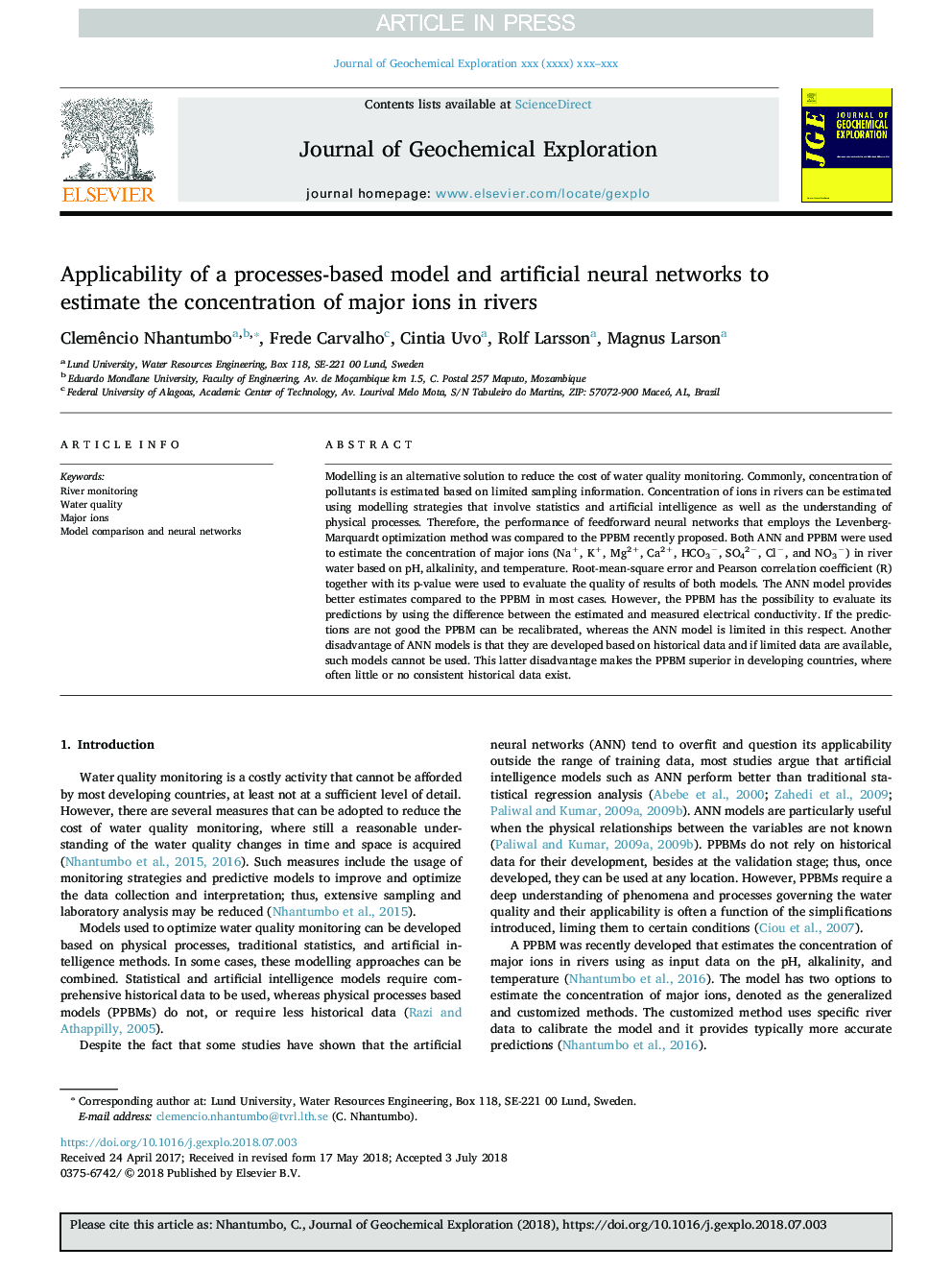| Article ID | Journal | Published Year | Pages | File Type |
|---|---|---|---|---|
| 8946189 | Journal of Geochemical Exploration | 2018 | 9 Pages |
Abstract
Modelling is an alternative solution to reduce the cost of water quality monitoring. Commonly, concentration of pollutants is estimated based on limited sampling information. Concentration of ions in rivers can be estimated using modelling strategies that involve statistics and artificial intelligence as well as the understanding of physical processes. Therefore, the performance of feedforward neural networks that employs the Levenberg-Marquardt optimization method was compared to the PPBM recently proposed. Both ANN and PPBM were used to estimate the concentration of major ions (Na+, K+, Mg2+, Ca2+, HCO3â, SO42â, Clâ, and NO3â) in river water based on pH, alkalinity, and temperature. Root-mean-square error and Pearson correlation coefficient (R) together with its p-value were used to evaluate the quality of results of both models. The ANN model provides better estimates compared to the PPBM in most cases. However, the PPBM has the possibility to evaluate its predictions by using the difference between the estimated and measured electrical conductivity. If the predictions are not good the PPBM can be recalibrated, whereas the ANN model is limited in this respect. Another disadvantage of ANN models is that they are developed based on historical data and if limited data are available, such models cannot be used. This latter disadvantage makes the PPBM superior in developing countries, where often little or no consistent historical data exist.
Related Topics
Physical Sciences and Engineering
Earth and Planetary Sciences
Economic Geology
Authors
Clemêncio Nhantumbo, Frede Carvalho, Cintia Uvo, Rolf Larsson, Magnus Larson,
